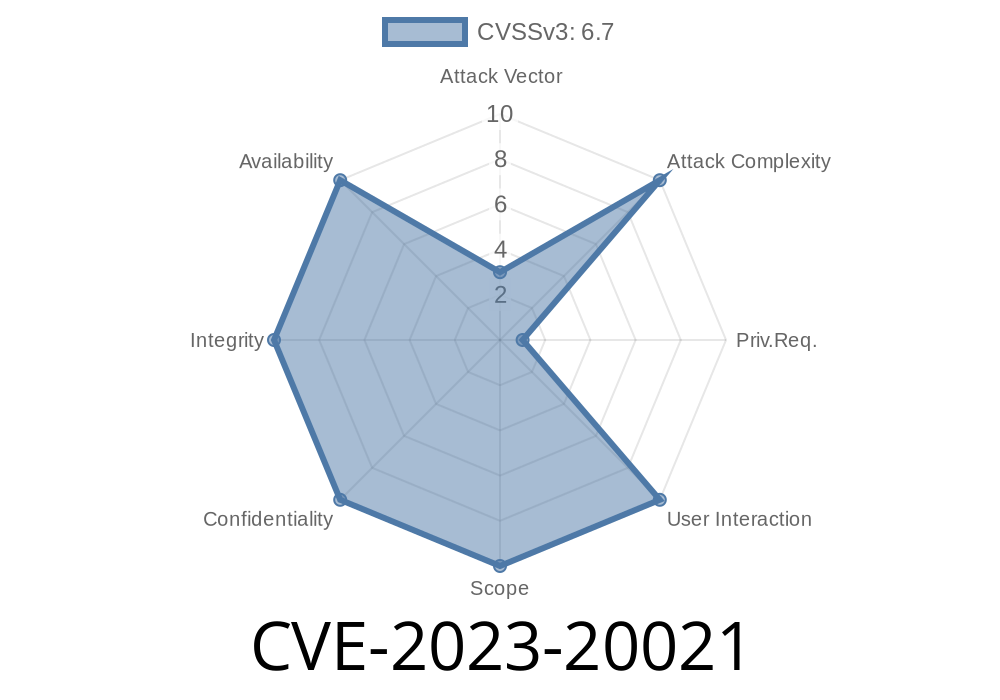---
The Cisco Identity Services Engine (ISE) is widely used to manage network access policies and ensure the security of connected devices. It's essential to keep it secure, as any vulnerability can disrupt network and data security. Unfortunately, recent findings show that there are multiple vulnerabilities in specific Cisco ISE CLI commands (CVE-2023-20021) that could allow an attacker with administrator privileges to perform command injection attacks on the underlying operating system (OS) and escalate their privileges to the root level.
In this post, we'll go over the details of these vulnerabilities, how they can be exploited, and how to protect your devices from these potential attacks.
Vulnerability Details
The vulnerabilities are due to insufficient validation of user-supplied input when executing specific CLI commands on Cisco ISE. An attacker could exploit these vulnerabilities by submitting a specially crafted CLI command, which could then be executed in the context of the underlying OS. A successful exploit could allow the attacker to elevate their privileges from the administrator level to root.
The affected Cisco ISE versions are as follows
* Cisco ISE 2.4
* Cisco ISE 2.6
* Cisco ISE 3.
* Cisco ISE 3.1
Exploit Proof-of-Concept
To help illustrate the potential impact of this vulnerability, let's look at a proof-of-concept exploit. Although we won't provide the exact payload or CLI commands for responsible disclosure reasons, it's essential to understand the general process.
Attacker logs in to the target Cisco ISE with valid administrator credentials.
2. Attacker submits a maliciously crafted CLI command, which is designed to target the identified vulnerabilities in the input validation.
Upon successful execution, the crafted command could either
a. Inject a command into the underlying OS, potentially allowing the attacker to execute other arbitrary commands.
Original References
For more detailed information on the CVE-2023-20021 vulnerabilities, please refer to the following resources:
* Cisco Security Advisory for CVE-2023-20021
* CVE-2023-20021 Details on NIST NVD
Mitigations
The best way to protect your Cisco ISE devices from these vulnerabilities is to update them to the latest software versions. Cisco has released software updates to address these vulnerabilities, and it's highly recommended that you apply these patches as soon as possible.
* Cisco ISE 2.4 - Patch 16 or later
* Cisco ISE 2.6 - Patch 10 or later
* Cisco ISE 3. - Patch 4 or later
* Cisco ISE 3.1 - Patch 1 or later
Additionally, ensure that only authorized and trusted users have access to the administrator privileges on your Cisco ISE devices. Regularly review and audit user accounts to minimize the risk of unauthorized access or credential compromise.
In conclusion, the CVE-2023-20021 vulnerabilities present a significant risk to Cisco ISE devices, as they can be exploited to gain root privileges and potentially compromise the entire network infrastructure. By understanding these vulnerabilities and taking the necessary steps to mitigate them, you can help protect your network from potential attacks and maintain a strong security posture.
Timeline
Published on: 04/05/2023 15:15:00 UTC
Last modified on: 04/12/2023 00:53:00 UTC
